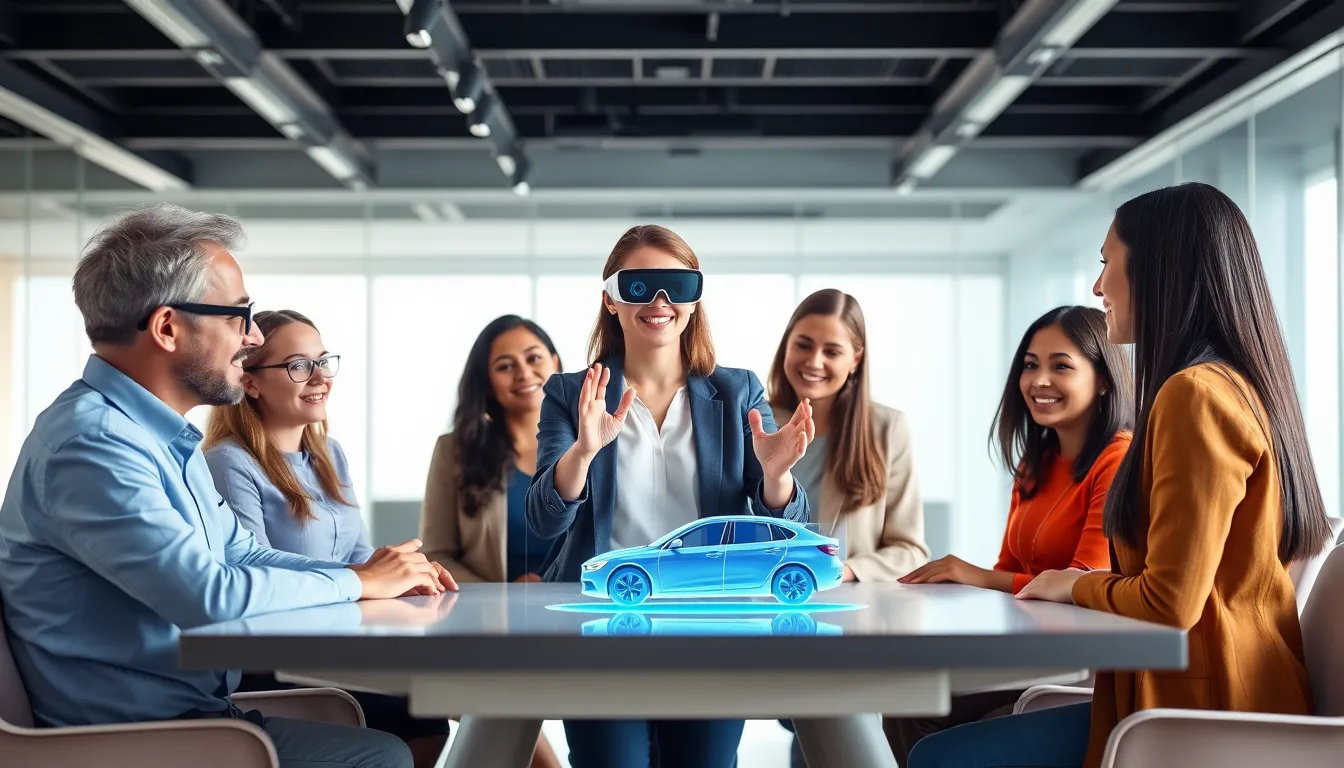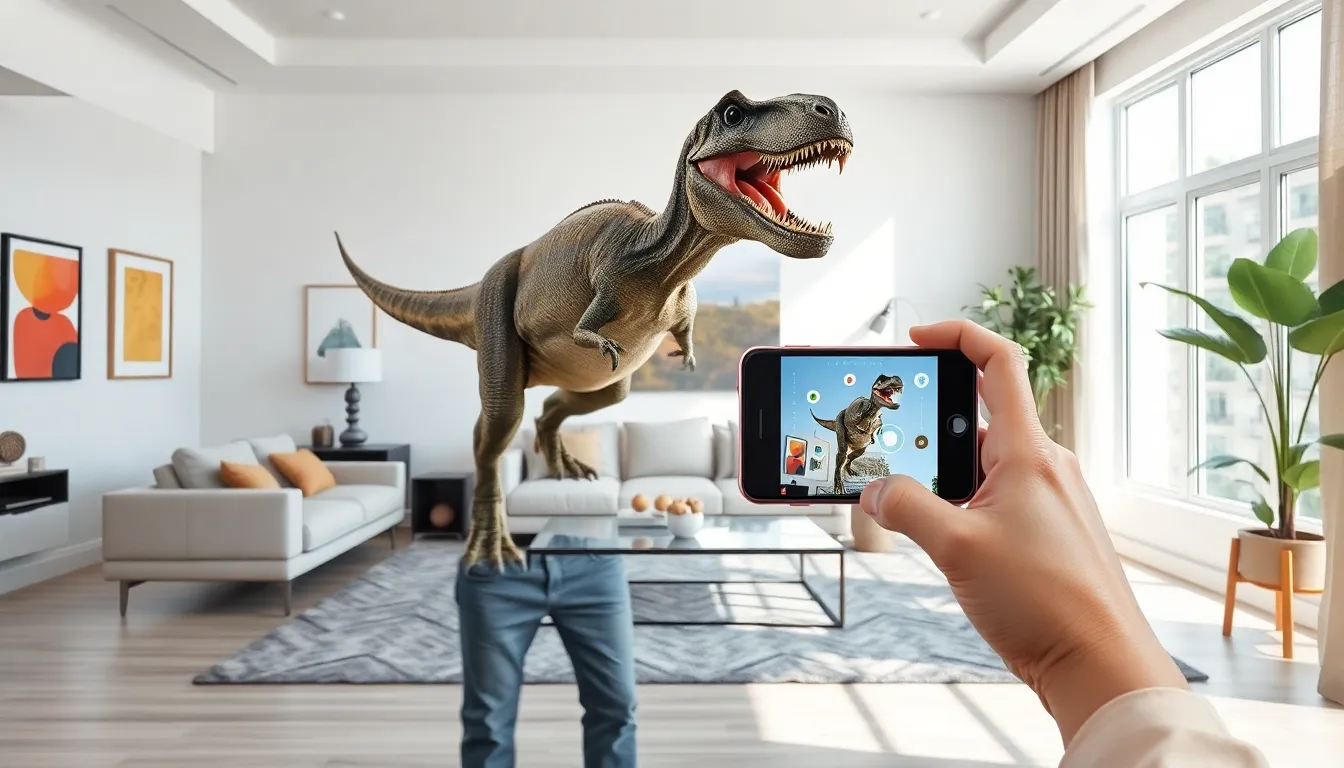Imagine standing in your living room and seeing a dinosaur stomp through the wall. Well, that’s the magic of augmented reality (AR) images for you. This cutting-edge technology pairs the virtual world with our physical one, creating experiences that are as delightful as they are captivating. From gaming to education, AR is revolutionizing how we interact with the world. But what exactly is it? Let’s jump into the wonderful realm of augmented reality images and unwrap its mysteries together.
Table of Contents
ToggleWhat Is Augmented Reality?

Augmented reality refers to a technology that superimposes computer-generated images onto the real world. This means users can experience and interact with both the virtual and physical environments simultaneously. Picture this: you walk into a room, and with the help of a smartphone or AR glasses, you see a 3D model of a car parked in the middle of your space. This blend of reality and imagination not only enhances the user’s perspective but also opens up new avenues for creativity and interaction. Simply put, AR enriches our view of the world, offering a composite experience that is both informative and engaging.
The Technology Behind Augmented Reality Images
At the heart of augmented reality images lies a combination of various technologies. First up, hardware components like cameras and sensors collect real-world data. Cameras capture the surroundings, while sensors detect things like distance and movement. With smartphone AR systems, these components work together seamlessly to create accurate overlays.
Then, we have software that does all the heavy lifting. Augmented reality relies on algorithms and software development kits (SDKs) to process the data collected by hardware. This software allows the virtual images to be placed accurately in the real world, adjusting dynamically based on the user’s movements. Emerging technologies like computer vision and machine learning also enhance AR’s accuracy, leading to a more immersive experience.
Applications of Augmented Reality Images
The versatility of augmented reality images is astounding, finding use in various fields. In retail, Patagonia allows shoppers to visualize their outdoor gear in action via AR images, offering instant information on product features. Similarly, IKEA employs AR to help customers visualize how furniture fits into their home before purchasing.
But it doesn’t stop with shopping. In education, AR transforms how students learn. Imagine biology classes where students can explore the anatomy of a frog without the need for dissection. AR apps can bring subjects to life, making learning an interactive adventure. Even in healthcare, AR aids in surgical procedures by projecting vital information directly onto a surgeon’s view.
Creating Augmented Reality Images
Creating augmented reality images is both an art and a science. Developers start with 3D models, which can be created using software like Blender or Autodesk Maya. These models are then integrated into AR software frameworks, such as ARKit for iOS or ARCore for Android. By using these frameworks, developers can ensure that their creations align perfectly with real-world objects.
Testing is crucial as well. A successful AR image must interact smoothly with real-world elements. Developers often use simulators to evaluate how their images appear in various environments. Once satisfied, they can deploy their creations through apps or platforms, making them accessible to everyday users.
Challenges and Limitations of Augmented Reality Images
Even though its transformative potential, augmented reality images face notable challenges. One significant issue is the variability in hardware capabilities. While many high-end devices can run AR applications smoothly, others may struggle, leading to a disjointed user experience.
Also, creating a convincing and engaging AR environment requires seamless tracking and calibrating. Insufficient environmental lighting or obstructions can disrupt the effectiveness of AR experiences. Plus, privacy concerns loom large. As AR applications often require access to a user’s camera and location data, ensuring data security is critical.
The Future of Augmented Reality Images
With rapid advancements in technology, the future of augmented reality images looks bright. Emerging trends suggest greater integration of AR with artificial intelligence (AI), enhancing interaction responsiveness. Picture a smart assistant that not only displays information but also tailors suggestions based on previous user interactions.
Besides, as more industries adopt AR, from training to entertainment, the demand for high-quality content will grow. Companies are beginning to explore AR advertising, bringing products to life in visually compelling ways that could change how consumers engage with brands forever. Virtual reality headsets are becoming more compact and affordable, allowing AR to break out of traditional boundaries.



